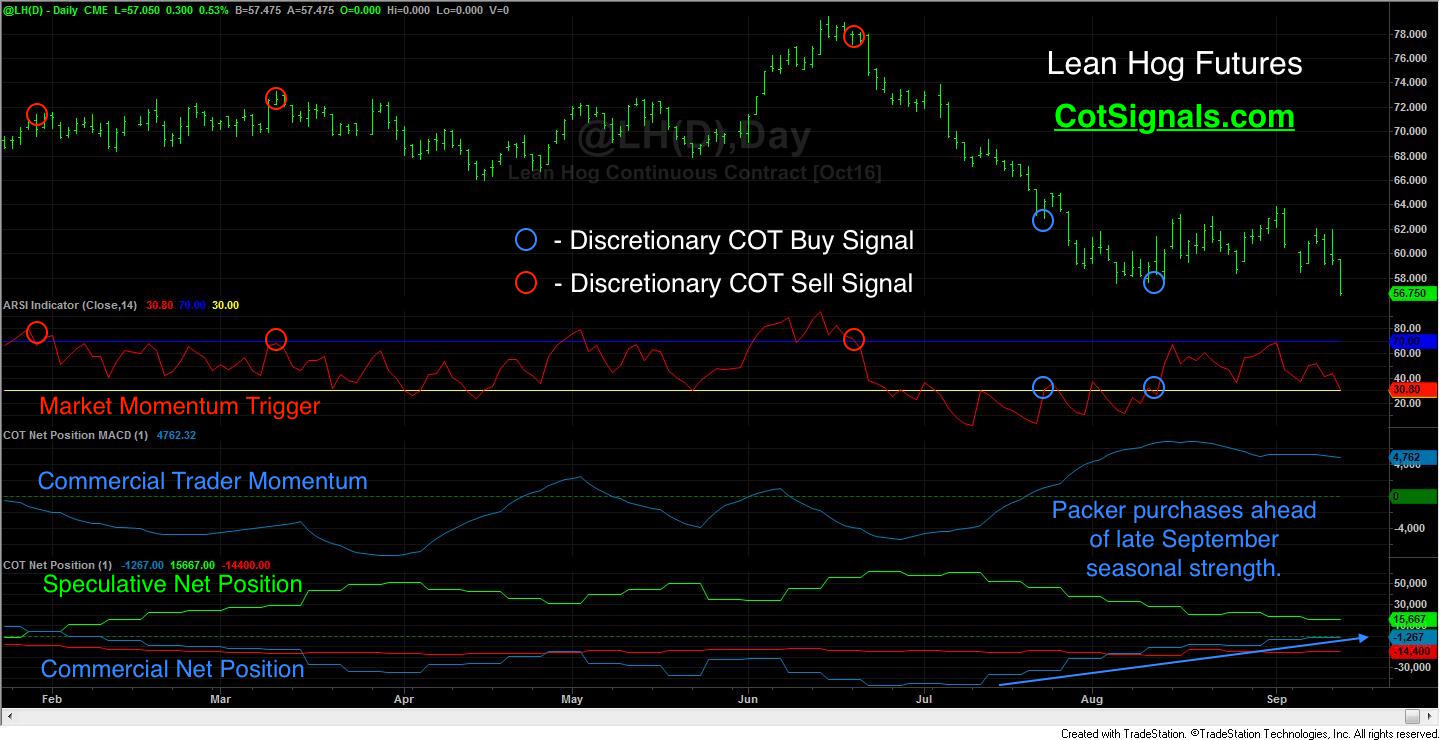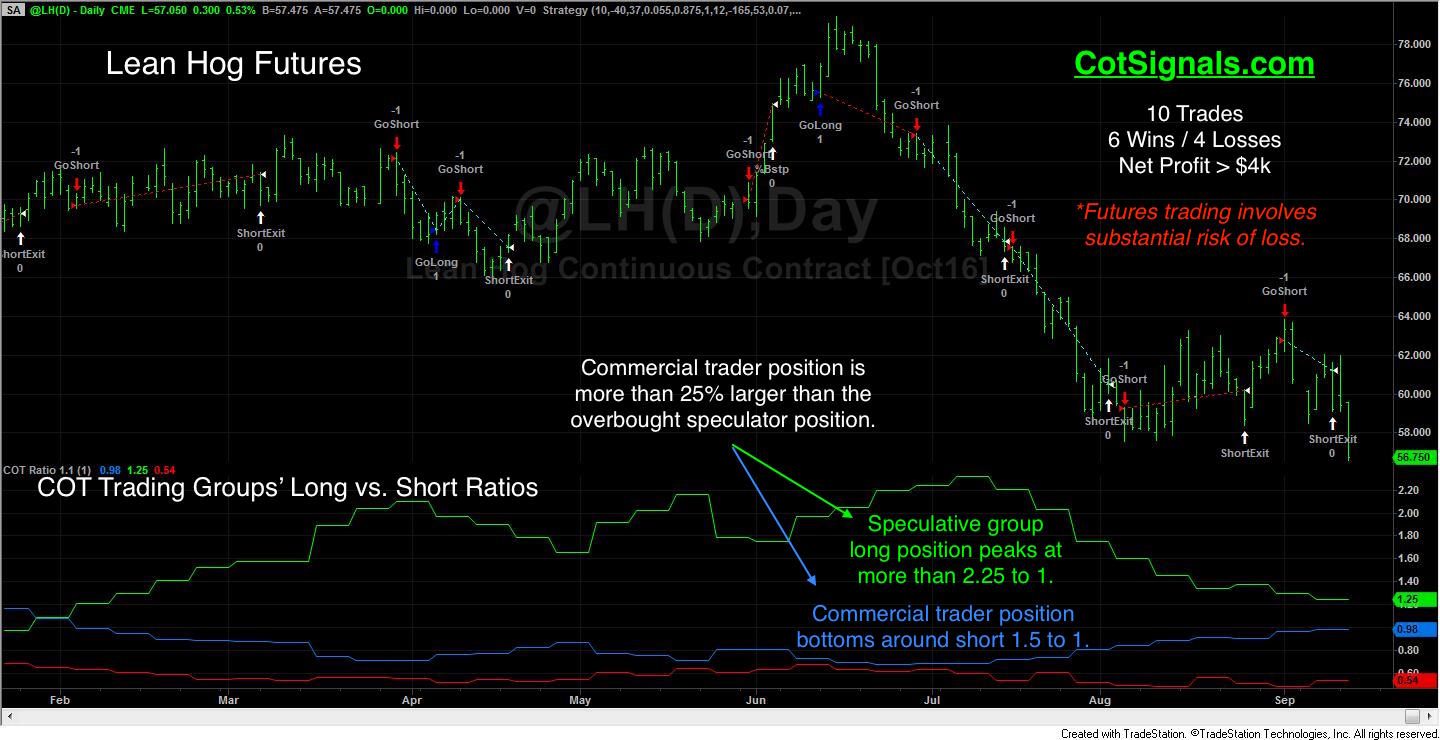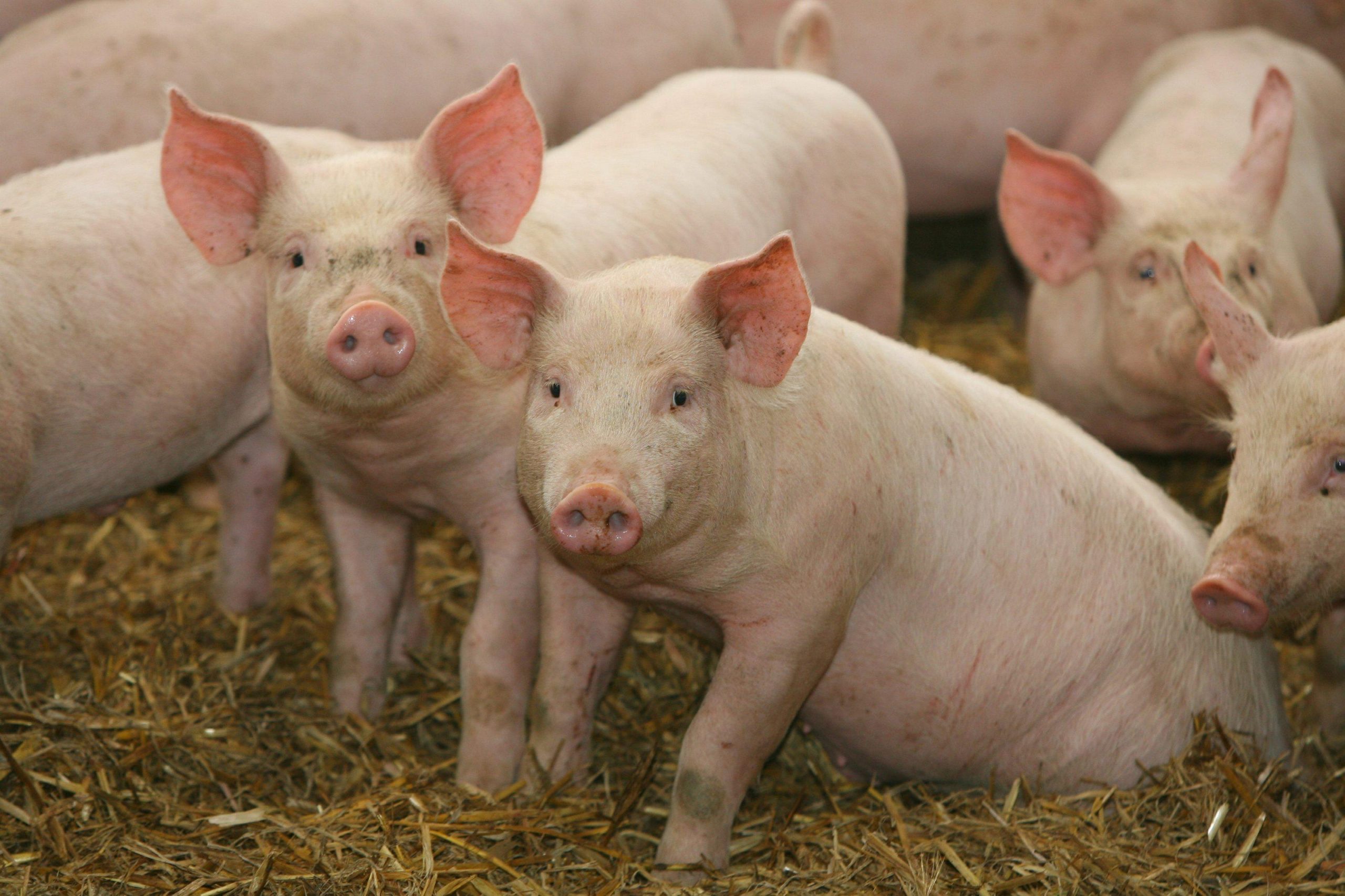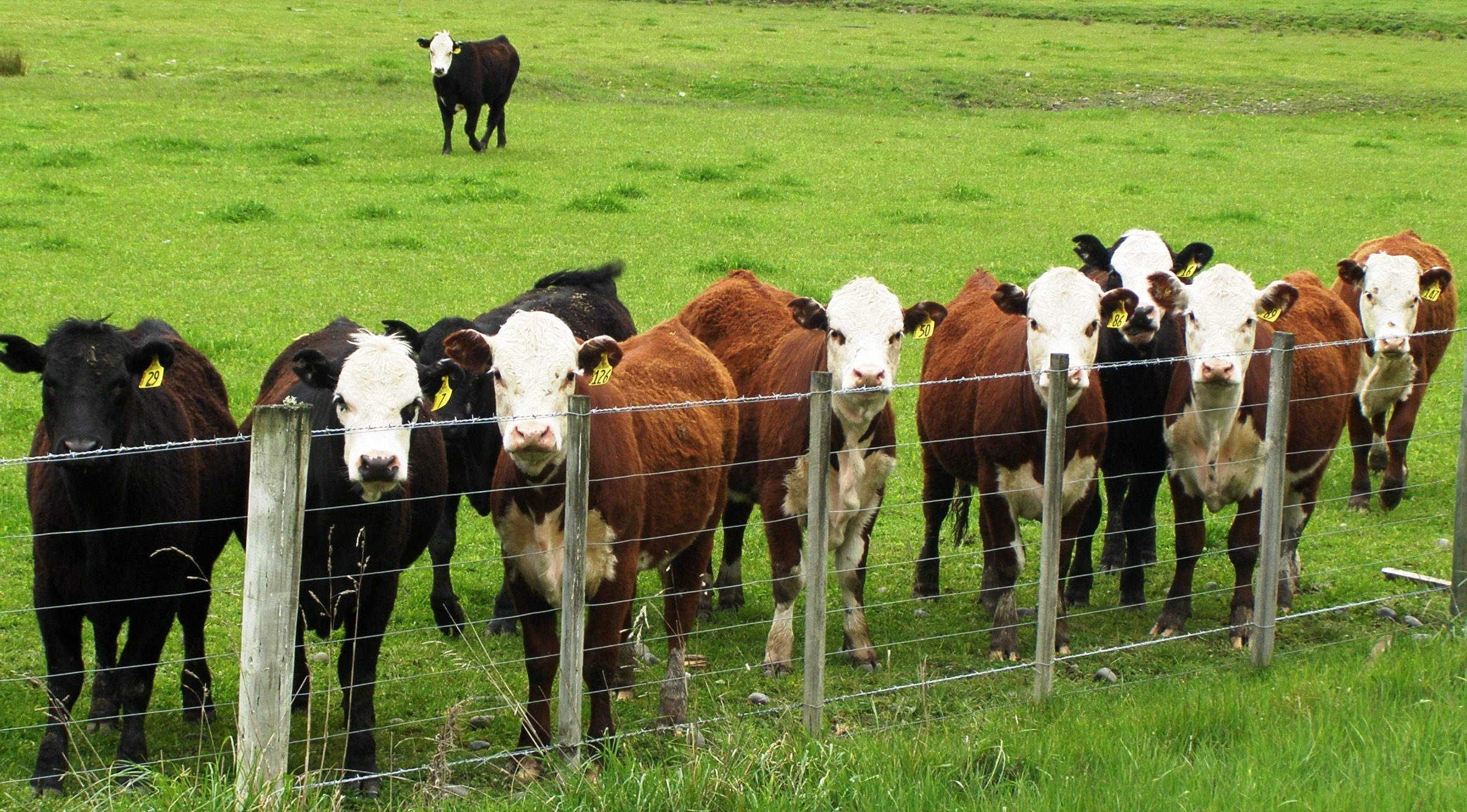This month has and will continue to be dominated by the financial headlines, and rightfully so. This month's FOMC meeting is as highly anticipated as any since we escaped the financial collapse of 2008. Today, we want to shift gears and look at something agricultural that has meaning beyond financial comments and adheres to the supply and demand characteristics of the very fabric of America. We'll examine the three sides of the hog market; the producers, consumers, and speculators. We'll also look at the seasonality that shows up in our analysis and why it remains a consistent part of this market at this time of year. Finally, we'll compare the two ways in which we trade this market; discretionarily and mechanically.
Hog prices have quietly declined by nearly 30% since June 15th along with many other commodities' prices like the grains they're fed. Fortunately for hog producers, it looks like this market is finally finding some support. You'll notice in the first chart below that commercial long hedgers, the hog packers, came back to the market and began to swing the total net commercial position back towards positive territory in mid-July. In fact, the commercial hog traders, as a group, have been net buyers in six out of the last seven weeks. Not coincidentally, you'll notice that hog prices have begun to stabilize as a result of their purchases. This buying has pushed commercial momentum back into positive territory and now, puts us on the lookout for Discretionary COT Buy Signals.
We're going to use the current setup to illustrate the difference between our two programs as the current situation is a perfect example. First, our tried and true Discretionary COT Signal structure. This is the method I've used for years and is still the source for my nightly trading sheet. This simple method is effective because it's the right combination of trading tools, technical and fundamental analysis and data. The idea is to only take trades in line with the commercial traders' momentum. Commercial traders are mean reversion traders who look for over and undervalued opportunities within the markets they trade to add to their bottom line and adjust their business strategies accordingly. Commercial hog traders feel prices are currently cheap. Therefore, hog packers are stepping up to the buy side to ensure profit margins at the current prices. Secondly, we use a short-term momentum trigger to provide a technical measure to our entry. We are nearing oversold territory, which will set the hammer for a buy signal. Finally, a once the market reverses higher, we'll pull the trigger and purchase the market using the recent swing low as a protective stop placement point.

This 1, 2, 3, approach has served us well over the years. However, most of my trading is mechanical in nature. Adapting to new tools allowed us to develop a better way to use the Commitments of Traders report's data. There are two primary types of mechanical trading strategy development thoughts. The first is, premise-based. The system designer has an idea that they're trying to quantify. The second is artificial intelligence or, neural networks. These use computers to reverse engineer the program's indicators to fit historical data. The COT Signals, both Discretionary, and Mechanical are premise-based programs. The premise is that the commercial traders understand the value of their own markets and when these markets become significantly over or, undervalued, we can capitalize on the reversion to their value area.
The Mechanical COT Signals use the Commitments of Traders data in a slightly different manner both to generate the entries and the exits. First of all, we combine the net position and the total position information to give us an idea of exactly how big the bets are that are being placed by both the commercial and speculative traders. Secondly, we use this proxy of value as both an entry and exit filter as it tracks money coming into and leaving the market in question. The implementation of this filter has had two primary effects on our mechanical trading program. First, it has substantially increased the total number of trades across all markets. This is because we aren't eliminating the entire buy or, sell side of the market because a slow moving sentiment indicator refuses to shift. The ratios we track create a new single point of data each week to be used throughout the coming week. Secondly, it shortens our holding times where appropriate but also allows us to hold onto trades when there is a preponderance of evidence in our favor as you'll see on our mechanical chart from the same period, below.

Finally, let's move into the seasonality of the situation and how it fits and is quantified in our Commitments of Traders modeling. Seasonality is a bit of an ethereal topic. We're all aware of it and we know it affects the markets, but measuring has been a different story. Several modeling techniques that have been used to measure seasonality in the commodity markets. Part of the reason for this is that they can't come up with anecdotal evidence to support random statistics. Unfortunately, this is where much of the public gets their bad advice; correlation does not equal causation. In this case, however, we have the American holiday seasons quickly approaching the industrial meat markets. Time to start getting the hams ready and this means pork packers are buying hogs to ensure their future supply chain. This seasonality shows up as strength towards the end of September.
Putting it all together, it looks like hogs could make another run lower. This would drive our short-term market momentum indicator into negative territory and set us up for a buy signal sometime next week. Furthermore, the reduction in speculative capital being deployed in the hog market is another sign that the last of this shakeout may be taking place. As you can see, we're currently flat the lean hog futures. We'll watch closely for trading signals and update as needed.
Please visit COTSignals for more information our Discretionary and Mechanical Commitments of Traders premise based commodity trading signals.






